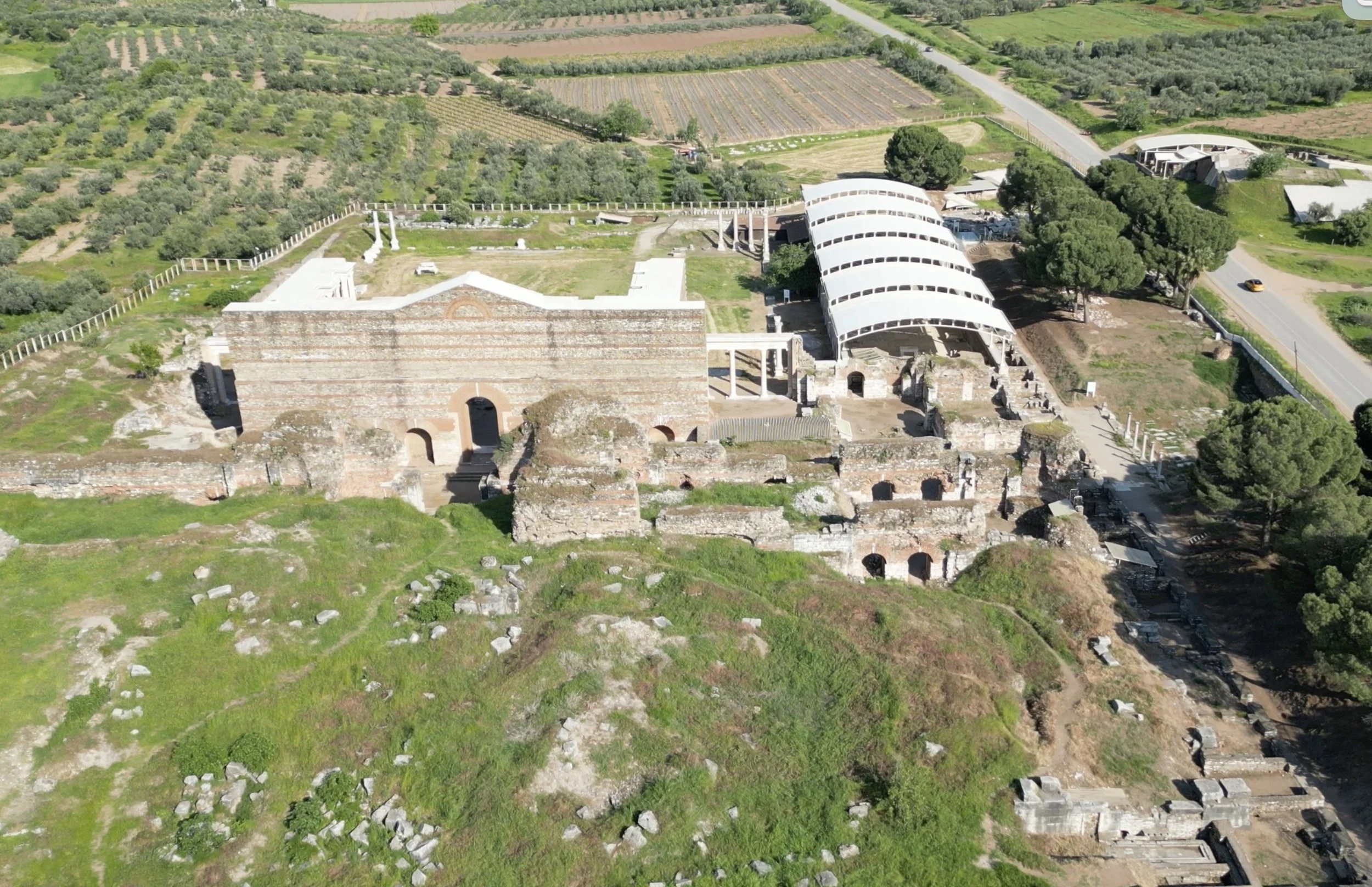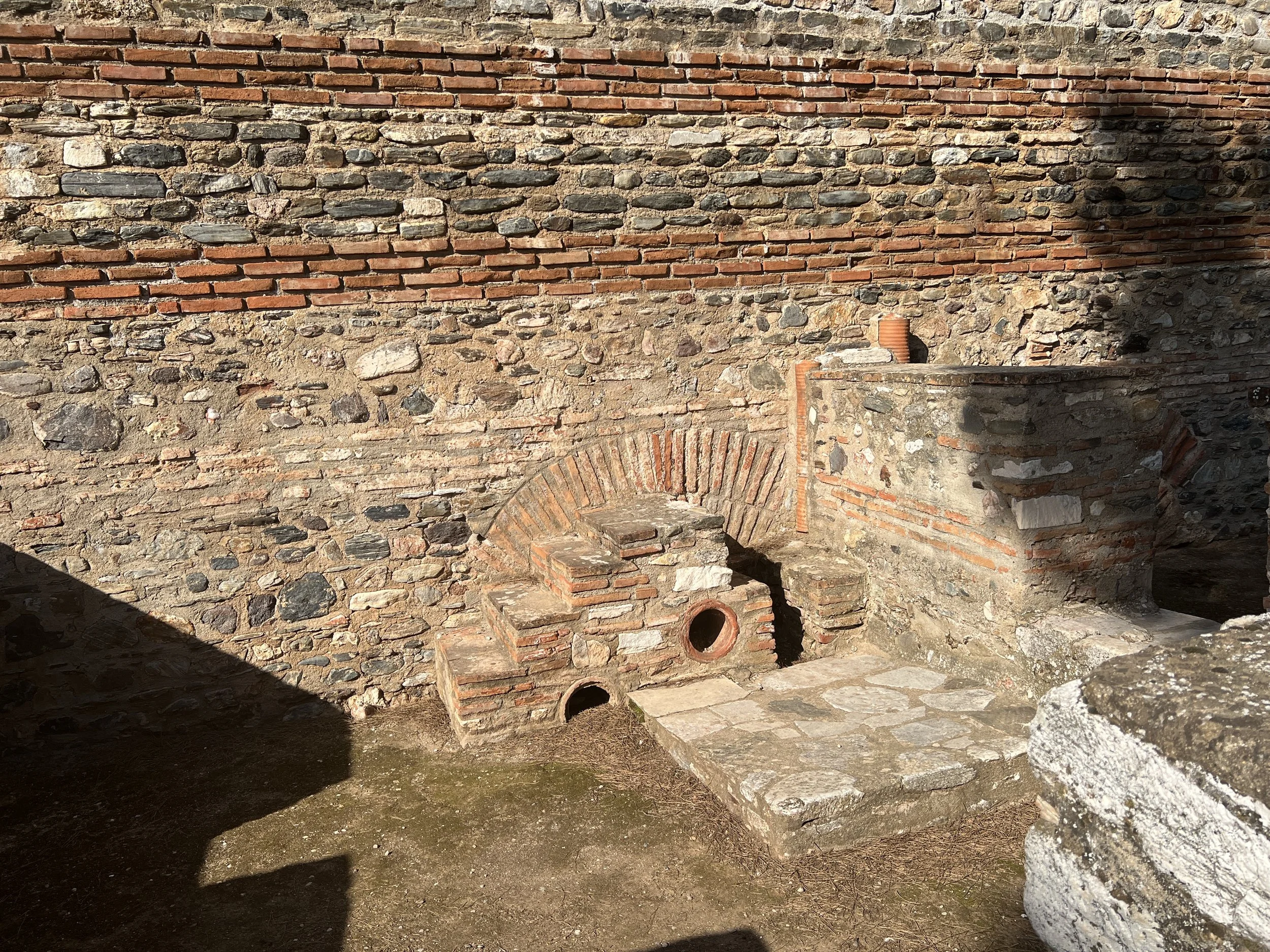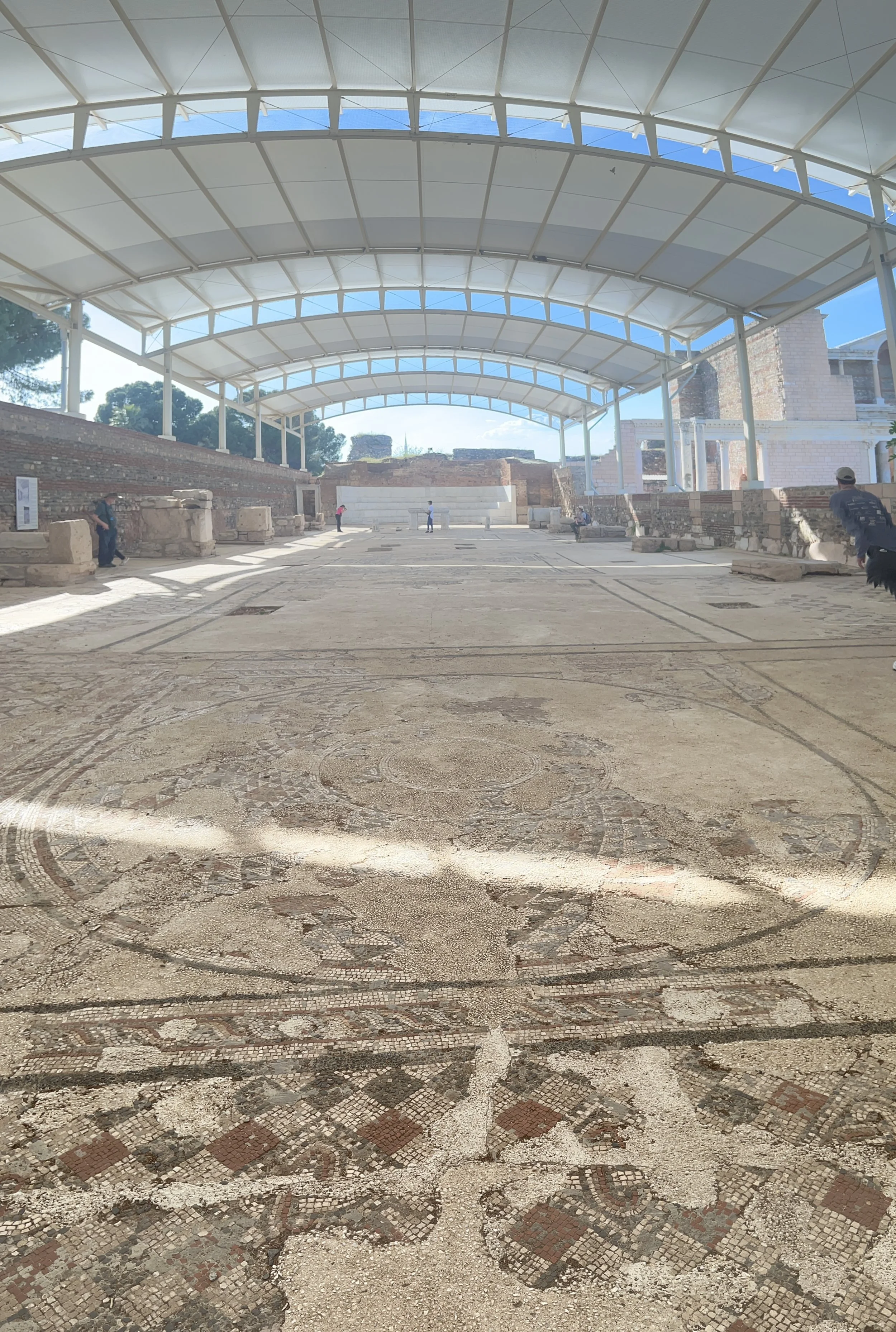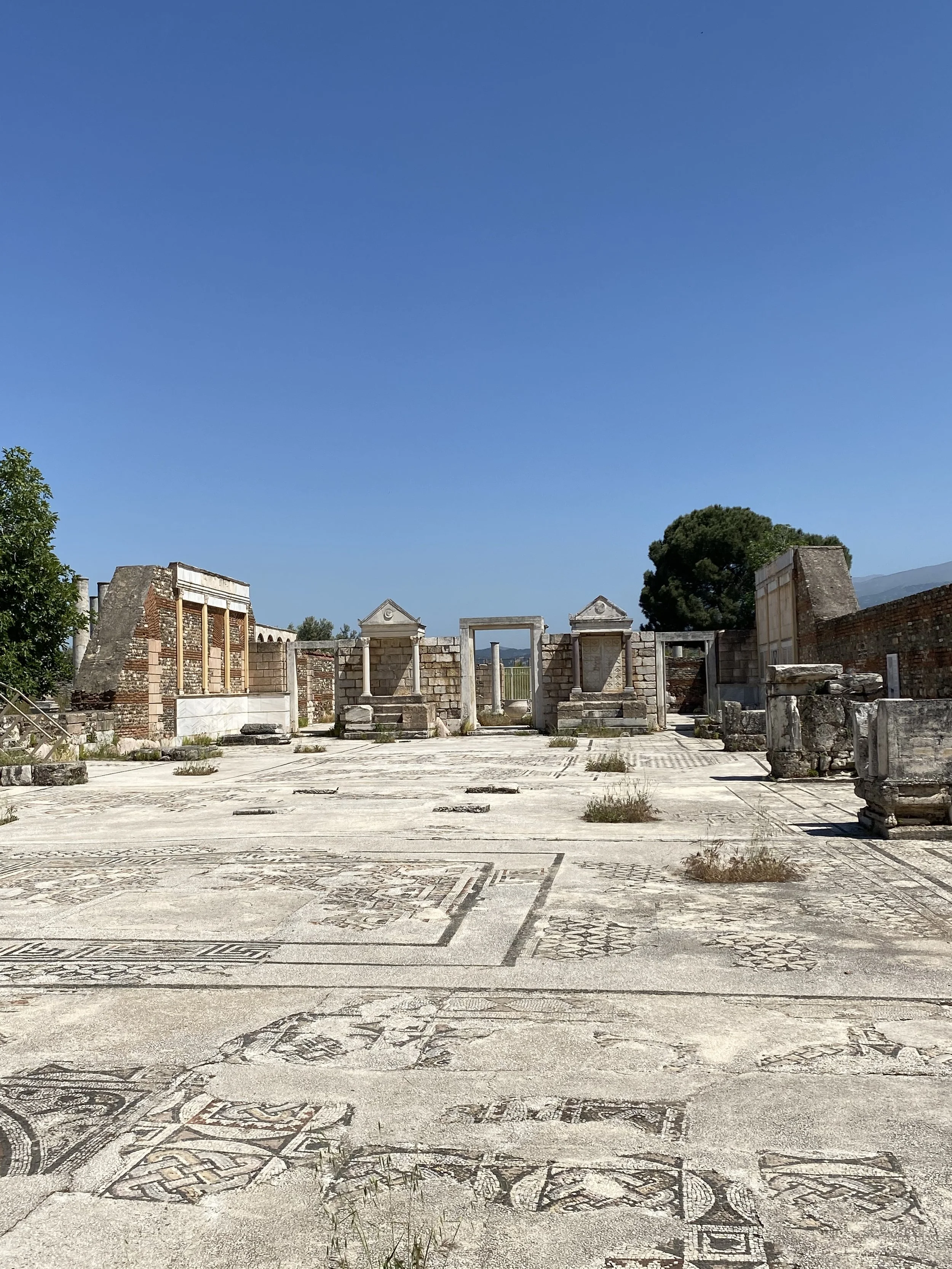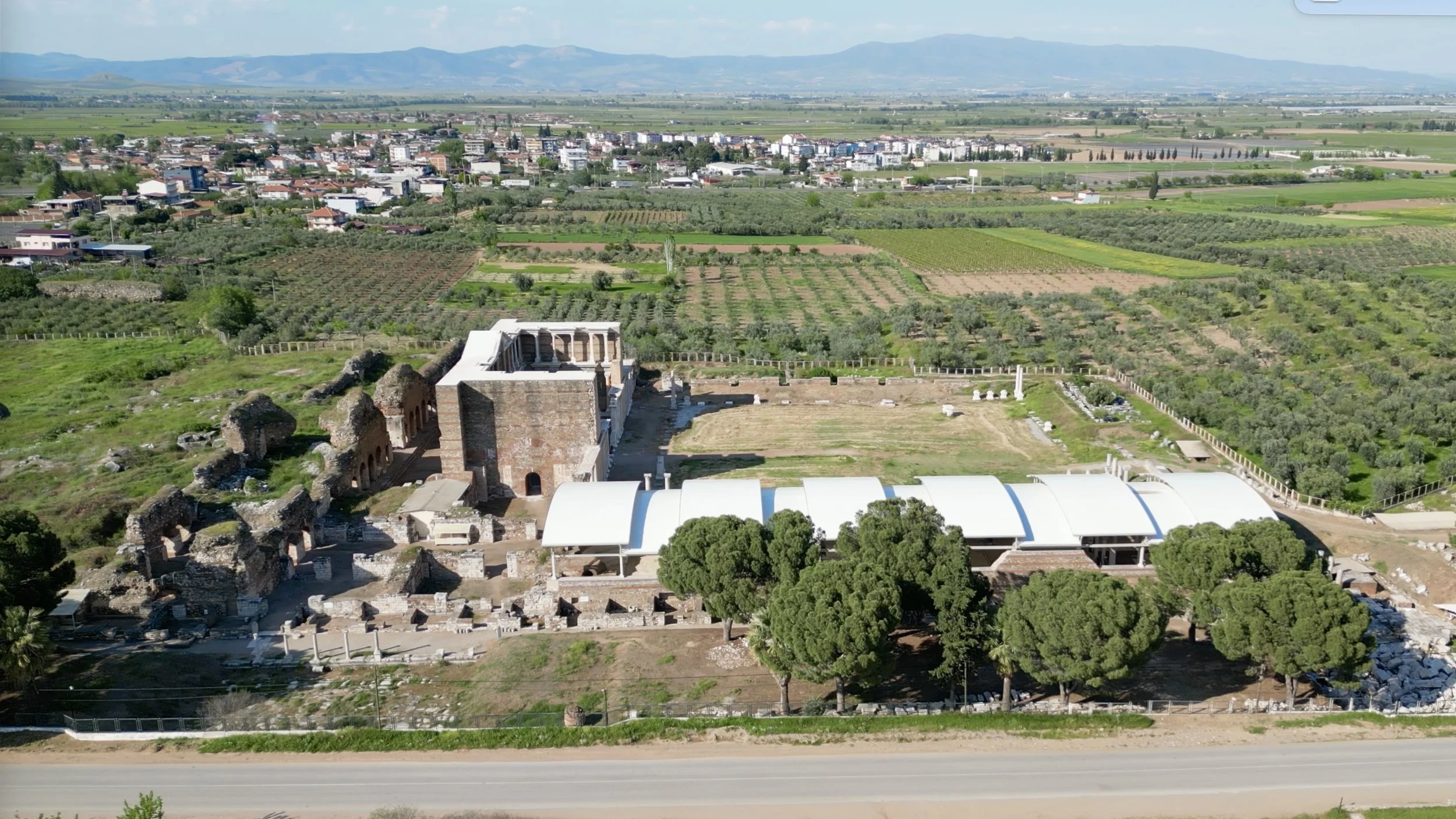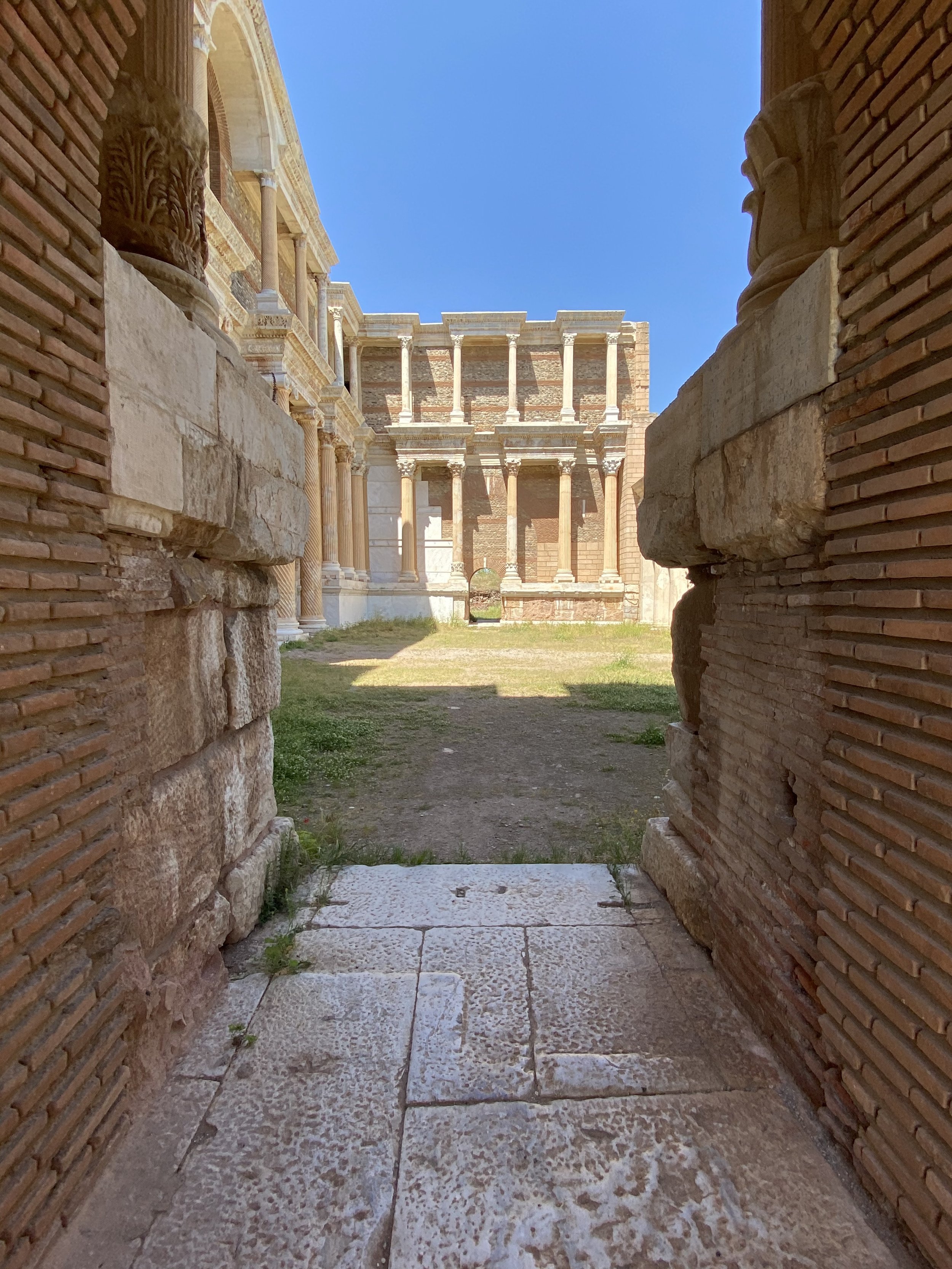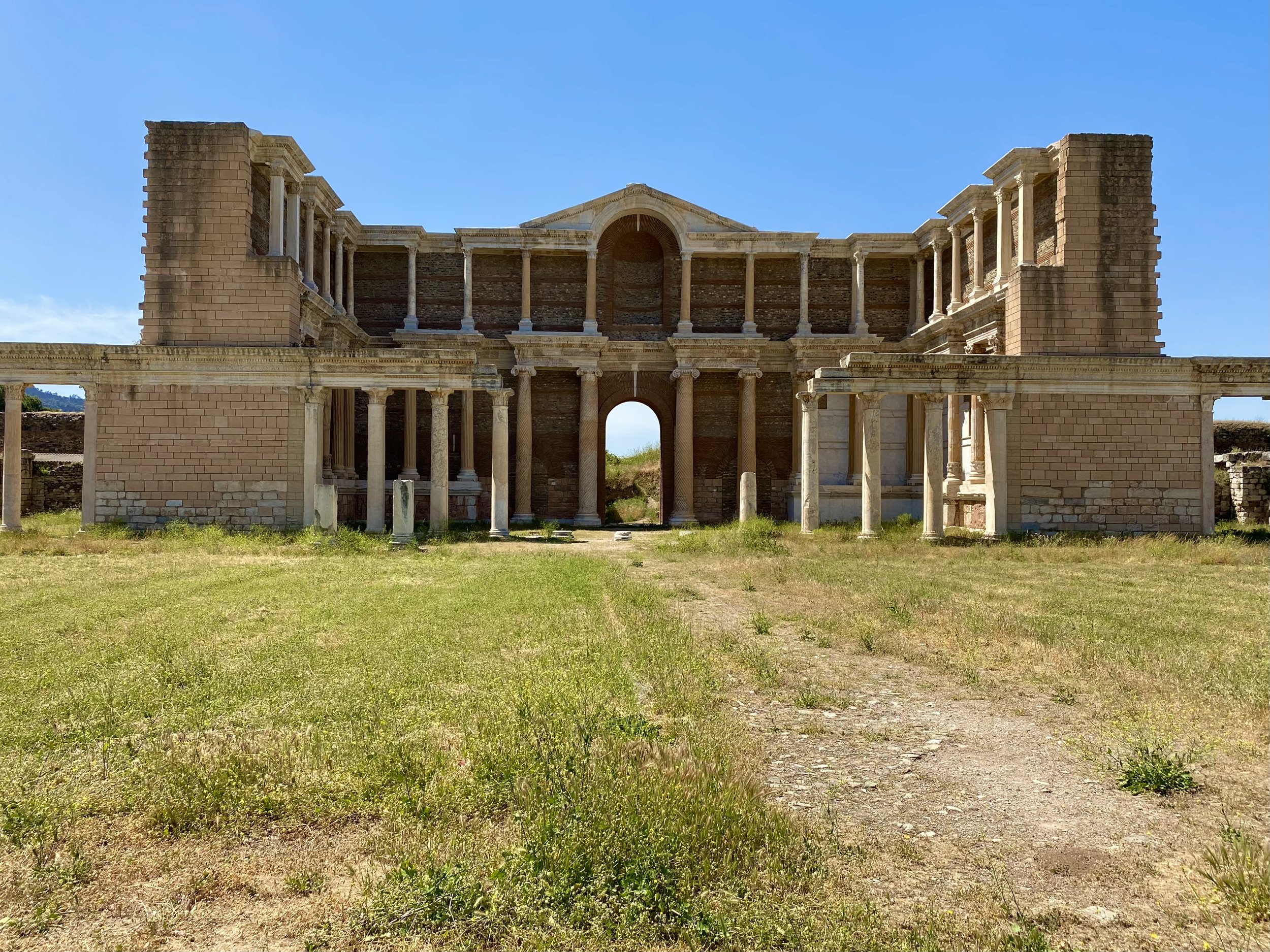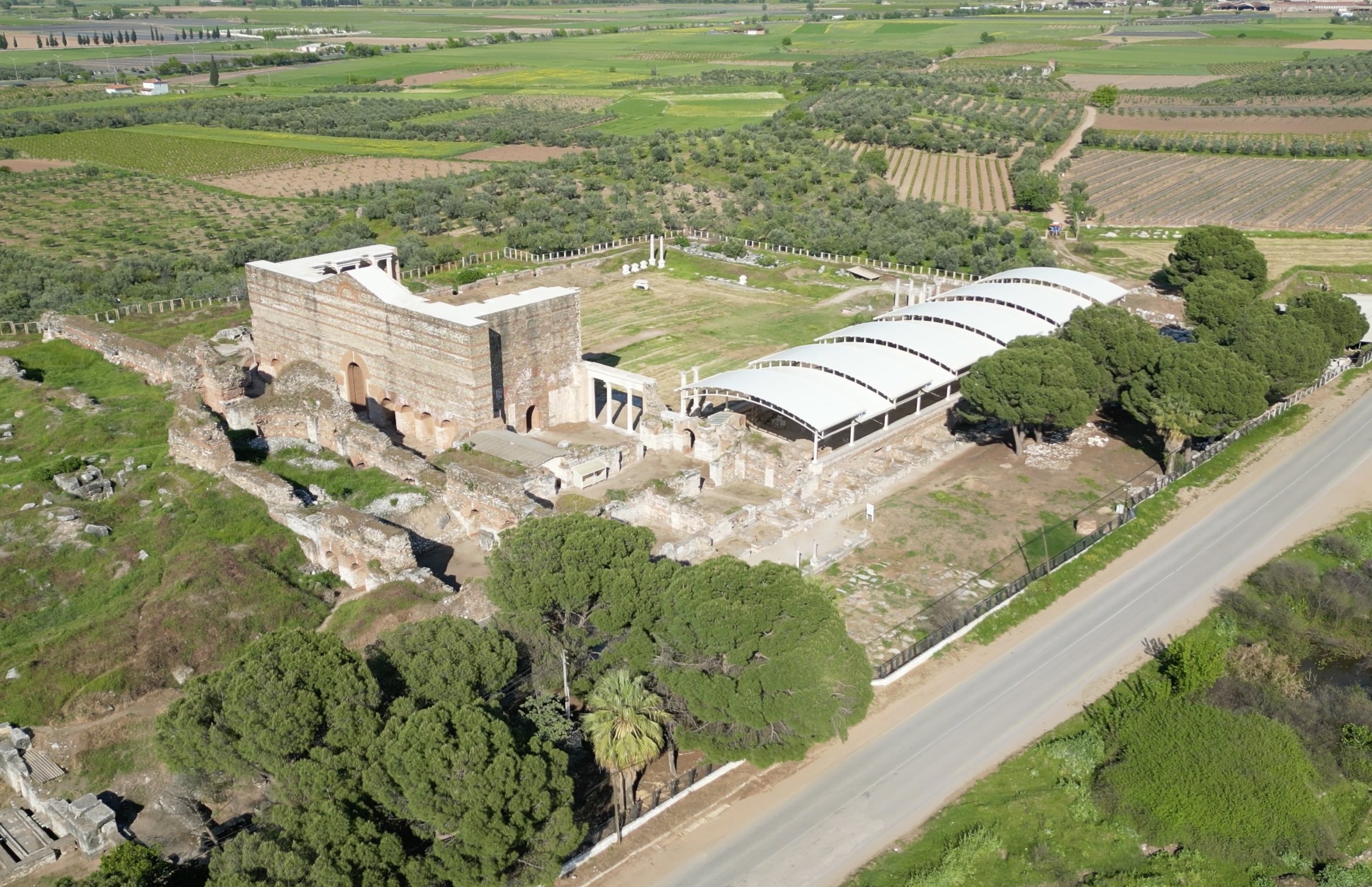Sardis, Asia Minor (Sart, Turkey)- Synagogue
“I know your works. You have the reputation of being alive, but you are dead. Wake up, and strengthen what remains and is about to die, for I have not found your works complete in the sight of my God. Remember, then, what you received and heard. Keep it, and repent.” Revelation 3:1-3
Last week we posted about the Artemision Temple area at Sardis, and how the nearby acropolis and it’s history of surprise attacks may be alluded to when Jesus says in his revelation that he will come like a thief in the night. The other main area of the Sardis archeological site, the synagogue, gymnasium and shops, illustrate the rest of Jesus words to Sardis. They had a reputation for being a faithful Christian assembly, but Jesus says they are dead. There is evidence of a history of compromises to get along in their impressive Roman city and not make waves. Sounds sadly familiar.
The synagogue at Sardis is the largest ancient synagogue found outside of the Levant. The city of “Sepharad” is mentioned in the Old Testament (Obadiah v20) as being city with a Jewish community - this may be Sardis, meaning Jews had lived here from the 6th century BC onward. Sardis was an important city on the royal road in the Persian era. From what we read in the informative signage on site, the synagogue building may have been given to the Jewish community for their purposes after having been a general civic type structure. It is right up against the gymnasium and baths, which would be unusual for a Synagogue. There are beautiful mosaic floors and wall decorations still intact. Many Greek inscriptions were found here, including a list of prominent Jews with their names in Greek - perhaps a sign of trying to blend in with hellenistic and then roman society. The large table in the apse - perhaps for reading from the torah scrolls - has support legs that date to 2nd century BC to 1st century AD and have engraved roman eagles and other animals - reused pieces but still something that normally would not be found in a synagogue. The apse is lined with stepped half circle benches that look like a byzantine synthronon. At the other end of the synagogue are two Torah Shrines to house the Torah scrolls. In 2021 this area was open to the elements, but this spring we found that there is now a canopy covering the area.
Outside of the synagogue are a line of excavated shops from byzantine times, 5th century AD. Jewish symbols, pagan symbols, Christian symbols have all been found here from various eras. The marble courtyard of the imperial gymnasium complex has been reconstructed. The elaborateness of the court indicates that it likely had to do with imperial cult worship and was probably completed in the late 2nd century to early 3rd century AD. There is a dedicatory inscription to emperors Caracalla and Geta. The palaestra had colonnaded margins with over 100 columns.
Sardis, Asia Minor (Sart, Turkey) - Synagogue and Gymnasium




